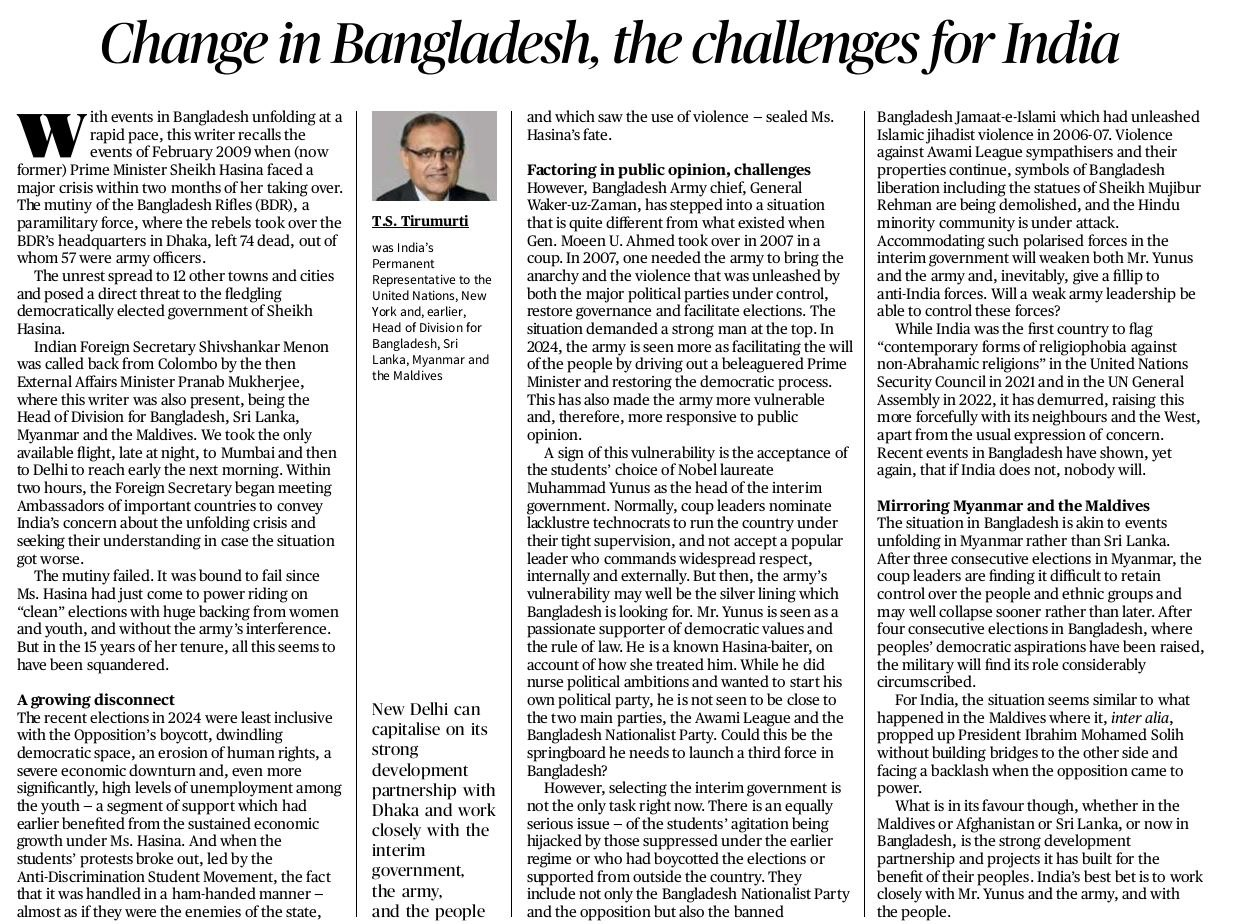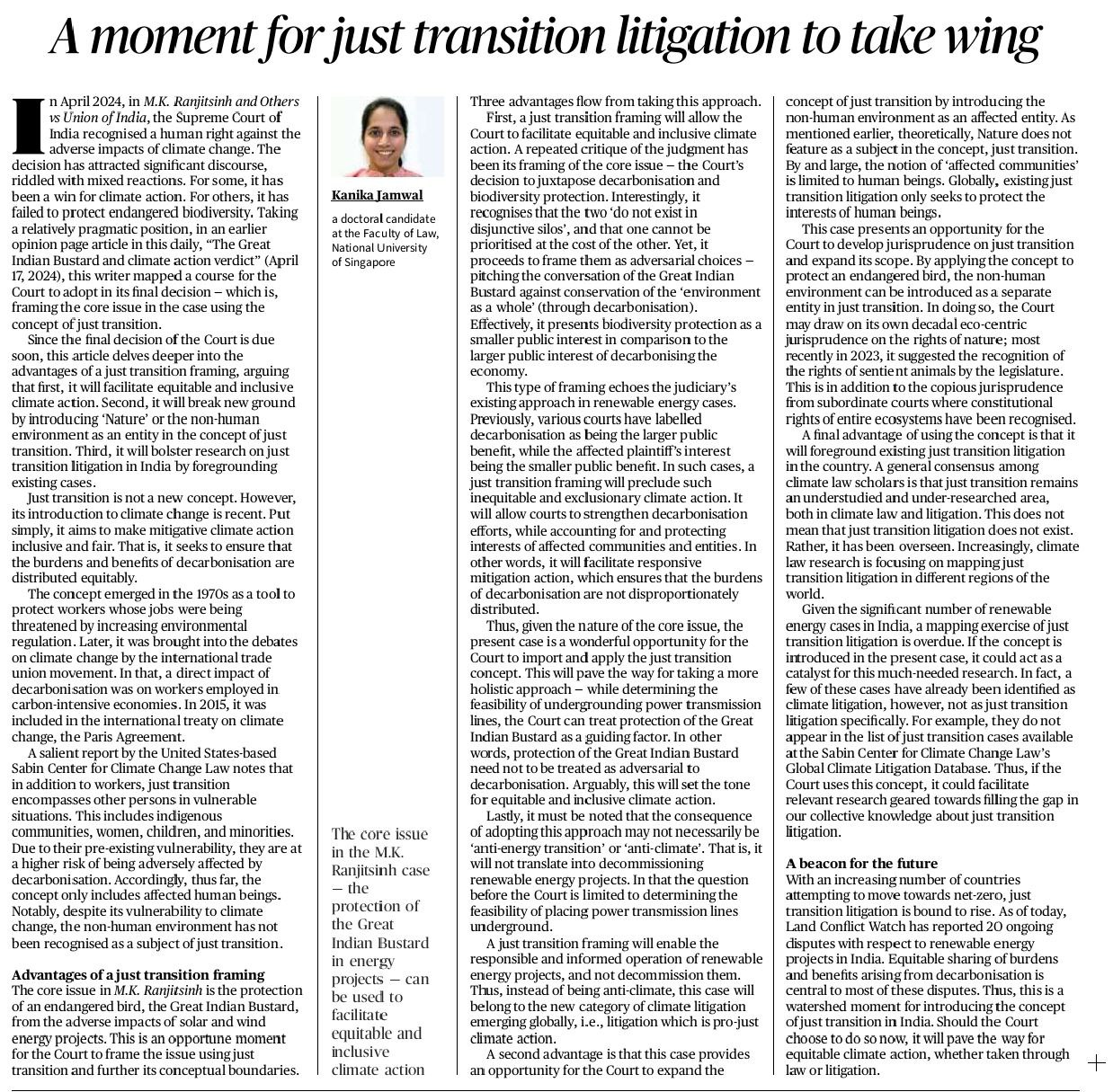1. India’s Strategic Response to the Political Crisis in Bangladesh
Introduction: Bangladesh is experiencing significant political upheaval, reminiscent of past crises but with unique challenges. India’s strategic response is crucial in shaping regional stability and fostering constructive bilateral relations.
Current Political Context in Bangladesh:
- Background: The 2024 elections in Bangladesh have been marred by a lack of inclusivity, with a major opposition boycott and concerns over democratic erosion. Recent student protests against the government were met with a harsh crackdown, leading to a shift in political power.
- Interim Government: General Waker-uz-Zaman and the military are playing a central role in restoring order. The appointment of Nobel laureate Muhammad Yunus as the interim head signifies a response to public sentiment and a potential shift towards democratic values.
India’s Strategic Response:
- Engagement with the Interim Government:
- Diplomatic Outreach: India should actively engage with the interim government led by Muhammad Yunus. By supporting his efforts to restore democratic processes, India can influence the stabilization of the political environment in Bangladesh.
- Development Partnerships: Leveraging its strong development partnerships, India can offer support in areas like economic aid, infrastructure projects, and capacity building. This will strengthen bilateral ties and support democratic and economic reforms in Bangladesh.
- Support for Democratic Processes:
- Promoting Stability: India should advocate for the protection of democratic institutions and human rights. This involves encouraging inclusive dialogue between the interim government, opposition groups, and civil society.
- Monitoring and Assistance: India can provide technical assistance and monitoring to ensure fair elections and support democratic reforms. Collaboration with international organizations and partners will be essential in this regard.
- Addressing Regional Security and Political Stability:
- Countering Extremism: With the rise of extremist groups and violence in Bangladesh, India must work with regional partners to address security threats. This includes intelligence sharing and joint efforts to counter radicalization.
- Minimizing Negative Spillover: India should take measures to prevent the political instability in Bangladesh from affecting its own security and economic interests. This involves diplomatic engagement with Bangladesh’s neighbors and international stakeholders.
- Managing Public Perception and Diplomatic Relations:
- Public Diplomacy: India should communicate its support for democratic values and human rights clearly to both domestic and international audiences. This helps in managing perceptions and maintaining a positive image in the region.
- Balanced Approach: India must balance its support for the interim government with sensitivity to the complex political landscape in Bangladesh, including addressing concerns from various factions and international actors.
- Comparative Analysis:
- Similarities with Previous Crises: The situation in Bangladesh shares similarities with past interventions in the Maldives and Myanmar. India’s approach should incorporate lessons from these experiences, focusing on constructive engagement rather than unilateral action.
Conclusion: India’s strategic response to the crisis in Bangladesh should be multifaceted, emphasizing diplomatic engagement, support for democratic processes, and regional security cooperation.
By leveraging its development partnerships and advocating for stability and democratic reforms, India can play a pivotal role in shaping the future of Bangladesh and strengthening bilateral relations.
Mains Practice Questions: |
1. Analyze India’s strategic approach to managing political crises in neighboring countries, using the current situation in Bangladesh as a case study. 2. Discuss the potential benefits and challenges of India’s engagement with the interim government in Bangladesh. How can India ensure that its support aligns with democratic values and regional stability? 3. Evaluate the role of India’s development partnerships in addressing political instability and fostering democratic reforms in Bangladesh.
|
2. The Strategic Implications of Just Transition Litigation in India
Introduction: In April 2024, the Supreme Court of India recognized a human right against the adverse impacts of climate change in the case of M.K. Ranjitsinh and Others vs Union of India.
- This landmark decision has sparked considerable debate.
- This analysis focuses on the potential advantages of framing climate litigation through the concept of “just transition,” arguing that it can lead to more equitable climate action, expand legal protections to non-human entities, and stimulate research in climate law.
Concept of Just Transition:
- Origins and Evolution: Originating in the 1970s to protect workers affected by environmental regulations, the concept has evolved to address the broader impacts of decarbonisation, including vulnerable human communities. The Paris Agreement (2015) incorporated it to ensure fair and inclusive climate action.
- Current Scope: Traditionally focused on human impacts, just transition aims to equitably distribute the burdens and benefits of climate action, ensuring that vulnerable groups are protected. However, it has yet to explicitly address non-human entities, such as endangered species.
Advantages of Just Transition Framing in M.K. Ranjitsinh Case:
- Promoting Equitable and Inclusive Climate Action:
- Balancing Interests: The current litigation involves protecting the Great Indian Bustard from the adverse effects of renewable energy projects. A just transition approach could facilitate a more balanced consideration of both decarbonization and biodiversity protection.
- Holistic Approach: By integrating just transition principles, the Court can avoid viewing decarbonization and conservation as opposing interests.
- Instead, it can ensure that the impacts of climate action are fairly distributed, aligning with broader public interests without undermining specific environmental protections.
- Expanding the Concept to Non-Human Environment:
- Legal Innovation: The case provides an opportunity to broaden the just transition framework by including non-human entities like endangered species. This can align with India’s existing eco-centric jurisprudence, which recognizes the rights of ecosystems and sentient animals.
- Jurisprudential Development: By applying just transition principles to the protection of the Great Indian Bustard, the Court can set a precedent for considering non-human entities in climate litigation, enriching the legal discourse on environmental protection.
- Stimulating Research and Development in Climate Law:
- Research Opportunities: Just transition is an emerging field in climate law that remains under-researched. The introduction of this concept in Indian jurisprudence can catalyze further studies and mapping of just transition litigation.
- Case Studies and Databases: The current litigation could highlight gaps in existing climate law databases and scholarly work, promoting a more comprehensive understanding of just transition in the context of Indian renewable energy disputes.
Global and Regional Context:
- International Trends: Just transition litigation is gaining traction globally, with various countries grappling with the equitable impacts of climate policies. India’s adoption of this concept could position it as a leader in progressive climate jurisprudence.
- Comparative Analysis: Similar to ongoing disputes in countries like Myanmar and the Maldives, India’s approach to just transition could influence how other nations address the balance between climate action and socio-environmental impacts.
Conclusion: The M.K. Ranjitsinh case represents a pivotal moment for integrating just transition principles into Indian climate litigation.
- By adopting this framework, the Supreme Court can promote equitable climate action, expand legal protections to include non-human entities, and advance research in climate law.
- This approach could not only address the immediate concerns of the case but also set a precedent for future climate litigation in India and beyond.
Mains Practice Questions |
1. Evaluate the advantages of framing climate litigation through the concept of just transition, using the M.K. Ranjitsinh case as a reference. 2. Discuss how expanding the concept of just transition to include non-human entities could impact environmental jurisprudence in India. 3. Analyze the potential effects of adopting just transition principles on the equitable distribution of burdens and benefits in climate action.
|



